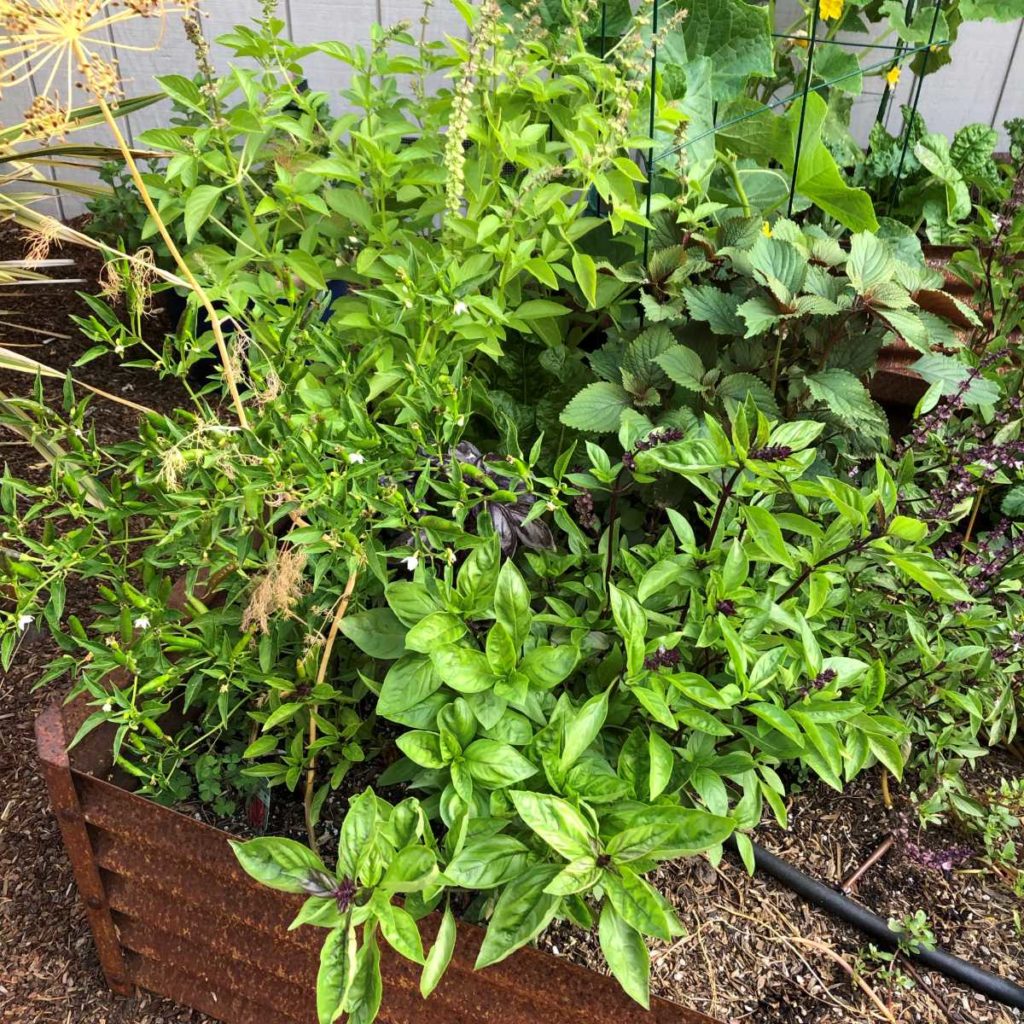
Spring heralds the season for planting Vietnamese herbs, which are mostly hot weather, tropical plants. Some are common and pretty easy to find. Others require a little bit extra effort to source. Above is a picture of many different types of herbs.
Why grow herbs yourself when you can buy them? Because there’s so much satisfaction in plucking herbs from your garden to put into your food. By virtue of their freshness, homegrown herbs possess lots of verve. You don’t need a lot for a single Vietnamese dish, but if you’re going to eat Vietnamese food, you need herbs on a regular basis. Think of a future full of Vietnamese rice paper rolls, lettuce wraps, noodle soups, rice noodle bowls, salads, and many other dishes. Why run to the store for fresh herbs, when you can just walk out to your garden to pick some?
If you have moderately warm temperatures, and a mostly sunny spot in the yard, on the patio, or even a balcony, you can grow herbs for Vietnamese food. I hope my tips here will help you find, grow, and enjoy Vietnamese herbs for many days during the year.
What Vietnamese herbs should you grow?
Many herbs used in the Viet kitchen are enjoyed in other cuisines. For example, fresh cilantro is readily available at mainstream, Hispanic, Asian, Middle Eastern, and international grocers, as well as farmer’s markets. I use cilantro a lot so I don’t grow it. Plus cilantro tends to bolt (go to seed) quickly. That said, if you want to grow cilantro, look for slow-bolting varieties.
I suggest starting with mint (hung or hung liu). Go to a nursery and find a variety of spearmint, which is the commonly grown mint for things like mojitos! It’s easy to cultivate, and if you live in a mild area, it will likely become a spreading perennial (mine is about five years old and resides in a large pot).
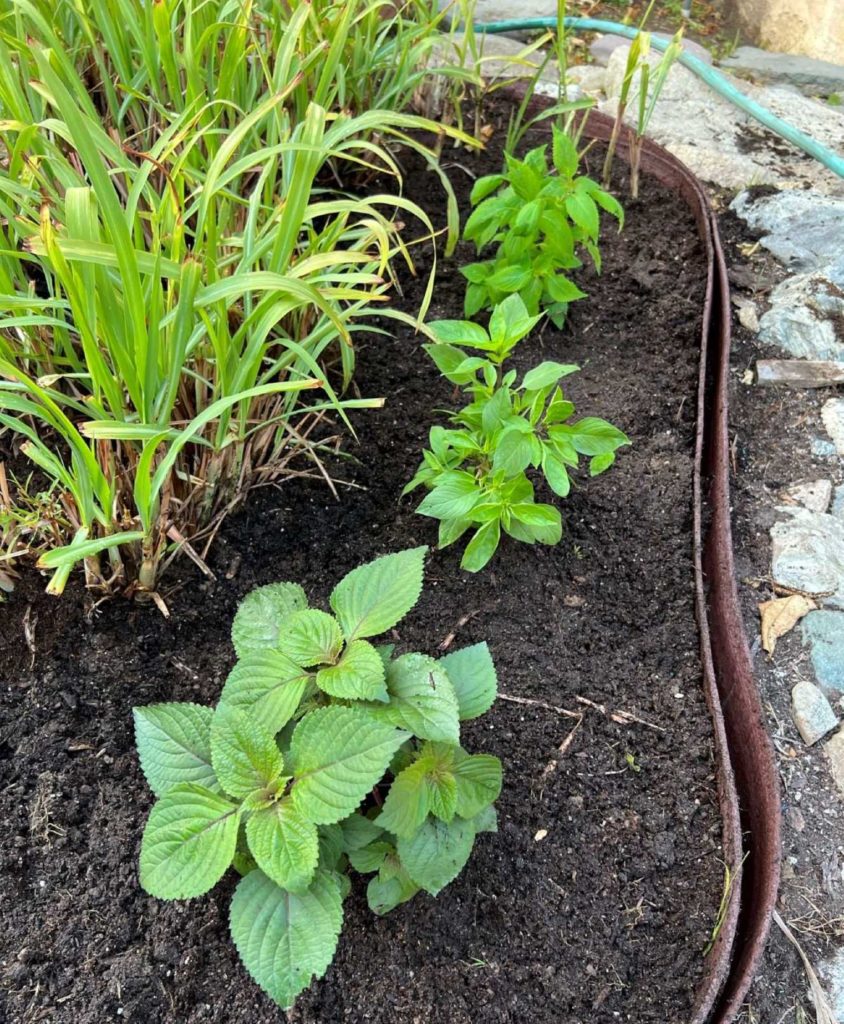
Along with mint, try growing Thai basil (hung que). Right now, you can find some wonderful different varieties of Thai basil sold as starter plants. If that’s unavailable, consider opal basil. Lime basil has a pleasing citrusy note (lemon basil is nice but my mom says it reminds her of men's cologne). Next on my list would be lemongrass (sa), dill (thi la), and garlic chive (he). Above are the herbs in the my mom's garden that I planted for her.
From there, advance to Vietnamese coriander (rau ram), Vietnamese shiso (tia to, above in the forefront), Vietnamese balm (kinh gioi), culantro (ngo gai), rice paddy herb (ngo om), and fish mint (diep ca). Japanese shiso -- particularly the green variety, can be a substitute for tia to; I've seen Japanese shiso sold at Viet markets as starter plants. Avid Vietnamese gardeners cultivate many others, such as wild pepper (la lot). I’ve just named the more common herbs.
Sourcing Herb Plants and Seeds
Nurseries surprisingly have a great variety of Vietnamese herbs nowadays. Check favorite garden shops frequently because inventories shift. I also enjoy buying herbs starter plants at Vietnamese markets in Little Saigons. In San Jose, California, I’d buy them at Thien Thanh and Dai Thanh markets. In Southern California’s Little Saigon, I recently scored plants at Da Lat market. Several years ago outside of Atlanta, I spotted pandan plants (a rarity in California) plus other herb starters at Hoa Binh market, located on Buford Highway in Chamblee. When shopping for plants at Asian markets, look for them near the entrance to the market. They may be sold at a concession, or on shelves; you may also just ask.
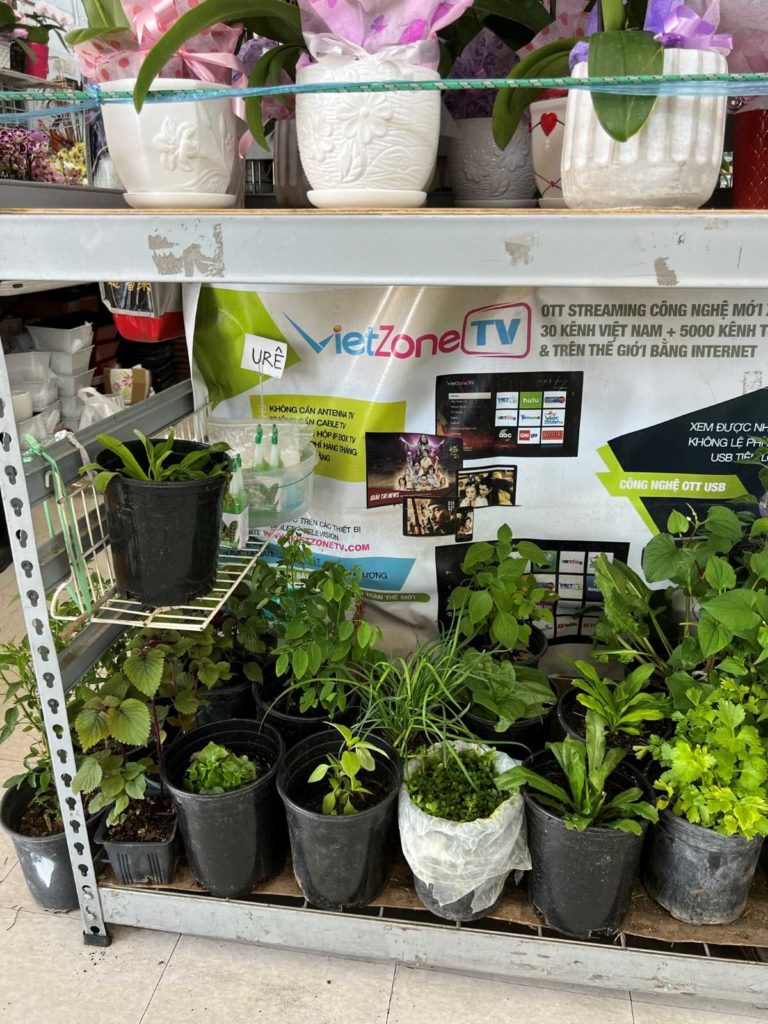
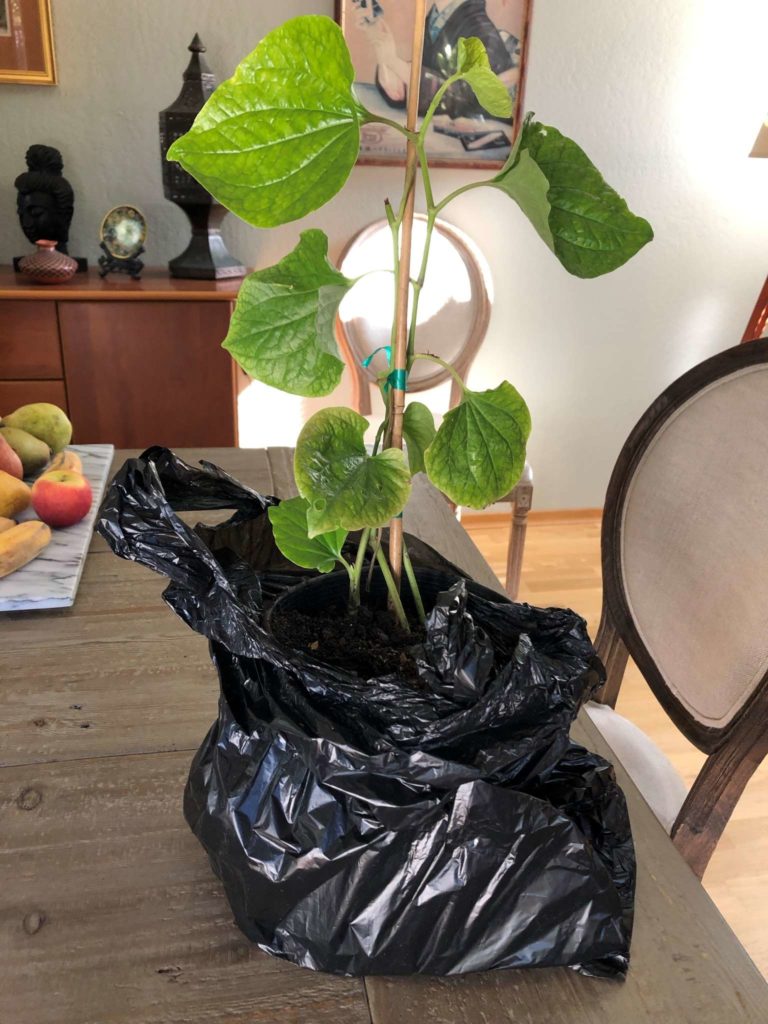
If there is no Vietnamese market nearby, look on Etsy (seriously) for starter plants. I have ordered la lot (wild pepper, above) and it arrived in good shape.
Also, with patience, you may grow Viet herbs from seed. Among my favorite seed sources are are Kitazawa Seed Company and True Love Seeds.
Sun, Water and Food
Plants are like people. They like comfy environments and like to have water and food. To that end, I prepare the soil with worm castings or compost before planting. Where to place the plants? With exception to wild pepper (la lot) which loves dappled shade, most Vietnamese herbs will thrive in full sun with regular watering. Rice paddy herb likes humidity and lots of water.
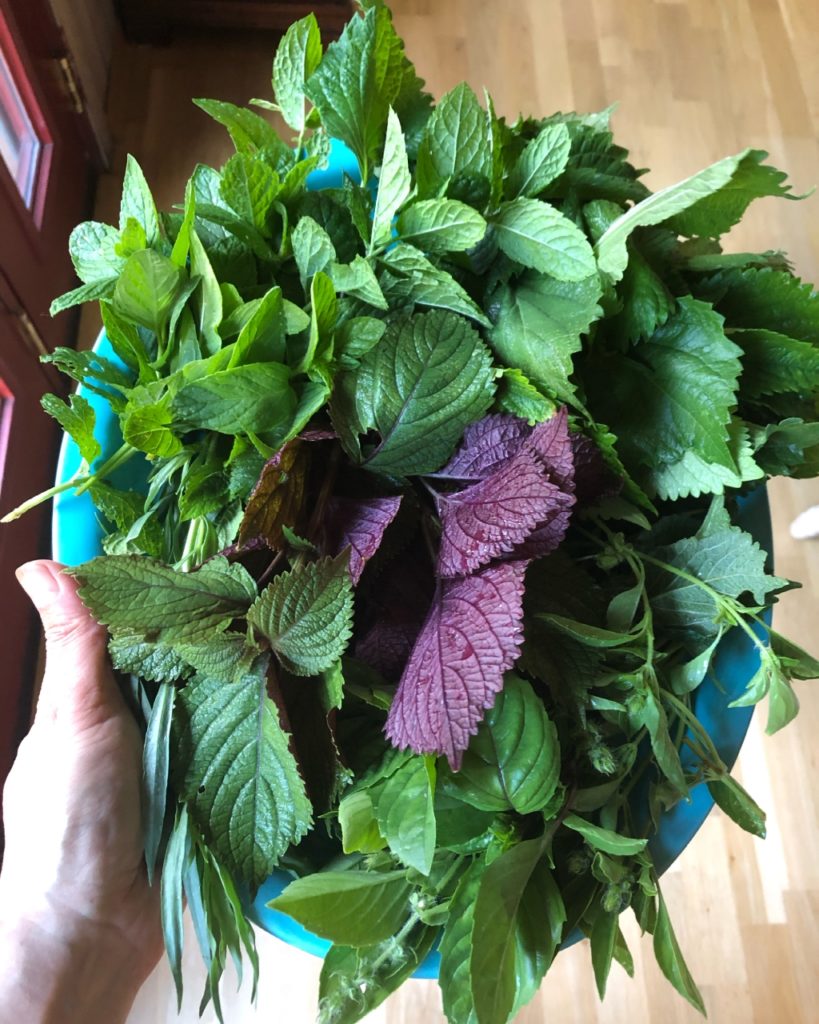
What about food? I feed the herbs on a monthly basis during the growing season. I favor Romeo and Dr. Earth brands of fertilizer. Fish and seaweed emulsion, or a kelp fertilizer are fabulous but know that they have an initial strong odor. Don’t worry. The smell dissipates after 24 hours. Take care of the plants and they’ll return the favor in your kitchen. The above platter is a harvest from 2021 -- mint, tia to, kinh gioi, lime and lemon basil, and tarragon.
Vietnamese Herb Pest management
Gardening isn't all pretty. The plants have potential enemies. My herbs are in raised bed planters, which are lined with gopher wire. I’ve seen a gopher pull down lemongrass. They are aggressive and hungry where I live so I’m always cautious.
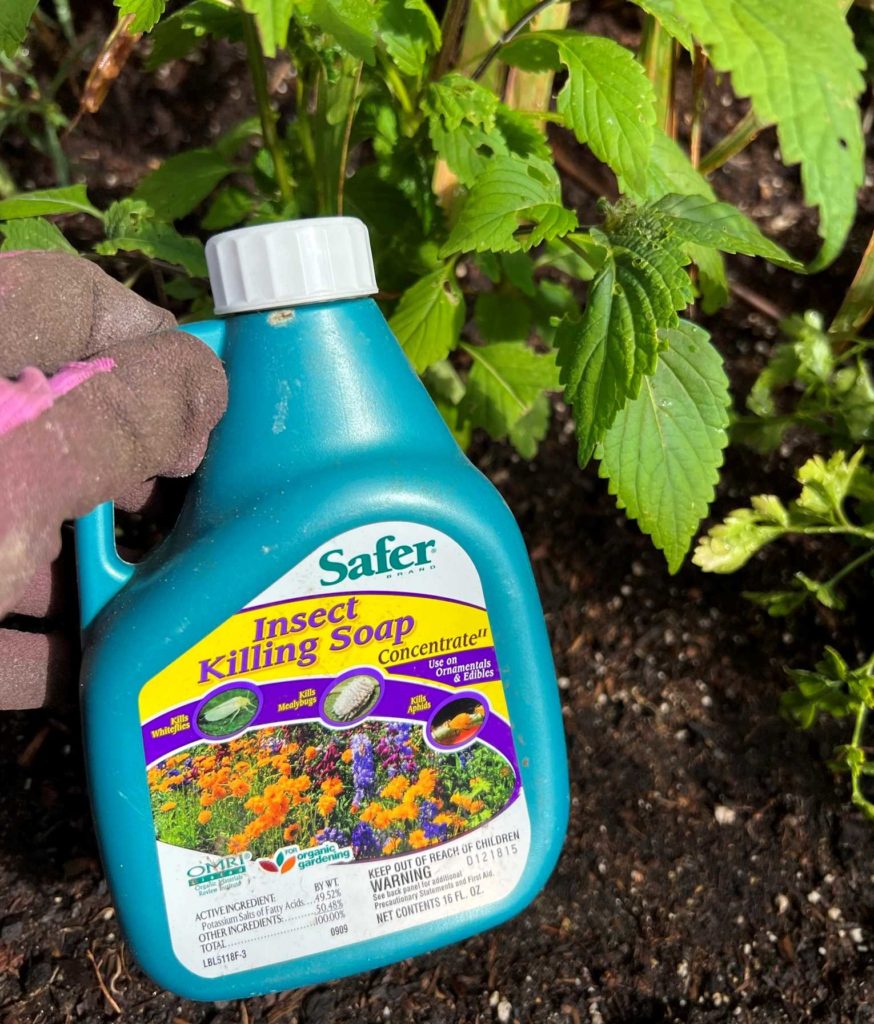
Once in a while, my plants get attacked by bugs. That happened with the kinh gioi this year. When that happens, try a low key defense. I go to is to spray Safer, which is made for food and ornamental plants. My concentrate is several years old but it still works (dilute it with water). I’ve made my own with ground pepper but it clogged up the spray bottle and I had to douse the plant.
Reseeding and Rooting Vietnamese Herbs
When you harvest the herbs don’t just pinch off the tops, or the plants will get leggy. Cut sprigs so that the plants will grow more. Flowers are edible, pretty, and flavorful. The stems tend to not be chewable. Vietnamese people often pluck the leaves off the herb stems and then they root the stems to propagate new herb plants. (This is how my mom does it.) If you do that, leave some leaves at the top and when the plants have a healthy amount of roots, plant the stems deep into the soil (for example, plant a 6-inch rooted stem so about 3 inches of it pokes above the soil surface), to facilitate strong root system development.
Feel free to add your tips. If you have questions, put them in comments and I will try to answer them.

















Patty says
I was reading your article on lemon grass tea and wondered if it could be used to cook noodles in and would it impart a lemony flavor to them? Would any of the above herbs work that way also? I enjoy Viet food immensely and always enjoy receiving your post.
Andrea Nguyen says
I don't think it will unless you have a lot. You could try it and see. Include the blades on top, if you grow lemongrass. Lemongrass surprises me all the time.
Mary-Frances says
Thanks, Andrea! I haven’t grown Viet herbs before but I’m going to give them a shot in Alabama given our tropical-ish climate. Glad for the Buford Hwy recommendations in Atlanta, which is a short drive. I’d love any other thoughts about growing pandan (does the plant get huge??).
Andrea Nguyen says
Mary-Frances -- You're so lucky to be that close to Buford Hwy. Pandan can get big but I don't know if it'll be HUGE. My sense is that it's like irises. Your question got me sleuthing on growing pandan. A few sites to check out . . . !
In Alabama, you can grow it outdoors! https://davesgarden.com/guides/pf/go/164920/#b
From Missouri! https://www.capegazette.com/article/mimic-its-tropical-home-give-pandan-grass-lots-warmth-and-humidity/196717
Propagation: https://www.littlegreenfingers.org/post/how-to-have-flourishing-pandan-plants-and-propagate-them
Tips on building humidity: https://deepgreenpermaculture.com/2019/03/31/how-to-grow-pandan-in-temperate-climates/
Jamie says
Hi Andrea,
I wonder which Vietnamese herbs can be grown together in a pot? The mint and diep ca, for example, I hear are very aggressive and would be need to kept separate from others?
Andrea Nguyen says
Well, you could grown those two together in a pot and they'd have to fight for space. I would keep them separate or far from each other. I grow mint in pots, not in beds. It's a perennial too so I don't need to dig up the dirt like I do for some of the others. Thanks for asking!